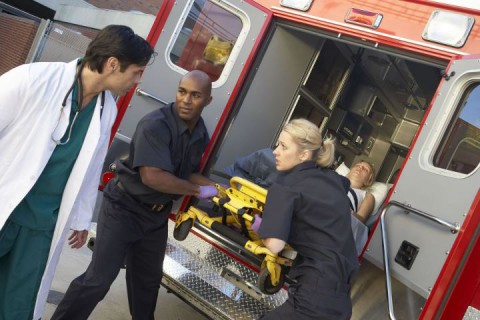 Emergency medical technicians (EMTs) and paramedics work on the frontlines of healthcare, providing lifesaving treatment under demanding conditions. These professionals typically thrive on intensity and know how to make good decisions in pressure-filled situations. EMTs and paramedics must also have excellent interpersonal, analytical and communication skills; there’s no room for miscommunication or faulty reasoning when lives are on the line.
Emergency medical technicians (EMTs) and paramedics work on the frontlines of healthcare, providing lifesaving treatment under demanding conditions. These professionals typically thrive on intensity and know how to make good decisions in pressure-filled situations. EMTs and paramedics must also have excellent interpersonal, analytical and communication skills; there’s no room for miscommunication or faulty reasoning when lives are on the line.
EMT and Paramedic Job Outlook
As the population of older Americans swells, so will the incidence of heart attacks and strokes, leading to the need for additional acute medical facilities, the U.S. Bureau of Labor Statistics (BLS) reports. In conjunction with this trend, demand for EMTs and paramedics will rise, with a 33% increase in employment opportunities projected from 2010 to 2020, which is more than double the average growth rate of 14% for all occupations.
Employment opportunities will most likely remain concentrated in urban and suburban areas, where larger populations typically mean more emergency situations, such as vehicle crashes.
Paramedic and EMT Job Duties
It goes without saying that there’s no “average day” for an EMT or paramedic. They respond to various types of 911 calls, assess the condition of injured or ill patients, perform CPR and other procedures, transfer patients to medical facilities and document their fieldwork.
Many job duties depend on the first responder’s level of training. For example, an EMT-Basic provides emergency response measures such as CPR and safe patient transport, while an EMT-Intermediate/Advanced also can administer intravenous fluids and dispense medication, the BLS reports. Paramedics have the most-advanced level of training, including in the use of heart monitors and other diagnostic equipment.
Paramedic and EMT Salary Potential
There were approximately 233,000 paramedics and EMTs working in the United States as of May 2012, the BLS reported. The median annual wage for those healthcare professionals was about $31,000; the top 10% earned more than $53,500. As is the case in most professions, EMTs and paramedics typically earn more as their level of experience, training and education increases.
Potential salary ranges and job prospects can be affected by a number of factors, including work experience and educational attainment, as well as local job market conditions. For EMTs and paramedics employed by government agencies, levels of public spending can also be a factor in determining pay and hiring options.
Certification and Training for EMTs and Paramedics
The first step toward a career as an EMT and, eventually, as a paramedic is completion of CPR training, which is required for admission to most certification programs, along with a high school diploma. According to the Bureau of Labor Statistics, EMT-Basics receive about 100 hours of relevant training, including trauma and illness assessment, patient handling and transport, standard procedures for clearing obstructed airways, bandaging and splinting, and use of some medical equipment.
At the EMT-Intermediate/Advanced level, the completion of 1,000 hours of training in areas such as advanced intubation, intravenous fluids and oral medications is a typical requirement. Paramedics, meanwhile, may have obtained an associate’s degree in addition to completing up to 1,300 training hours.
The BLS notes that all states require paramedics and EMTs to be licensed, although specific requirements differ. In most cases, these healthcare professionals also must complete training on driving an emergency vehicle.









